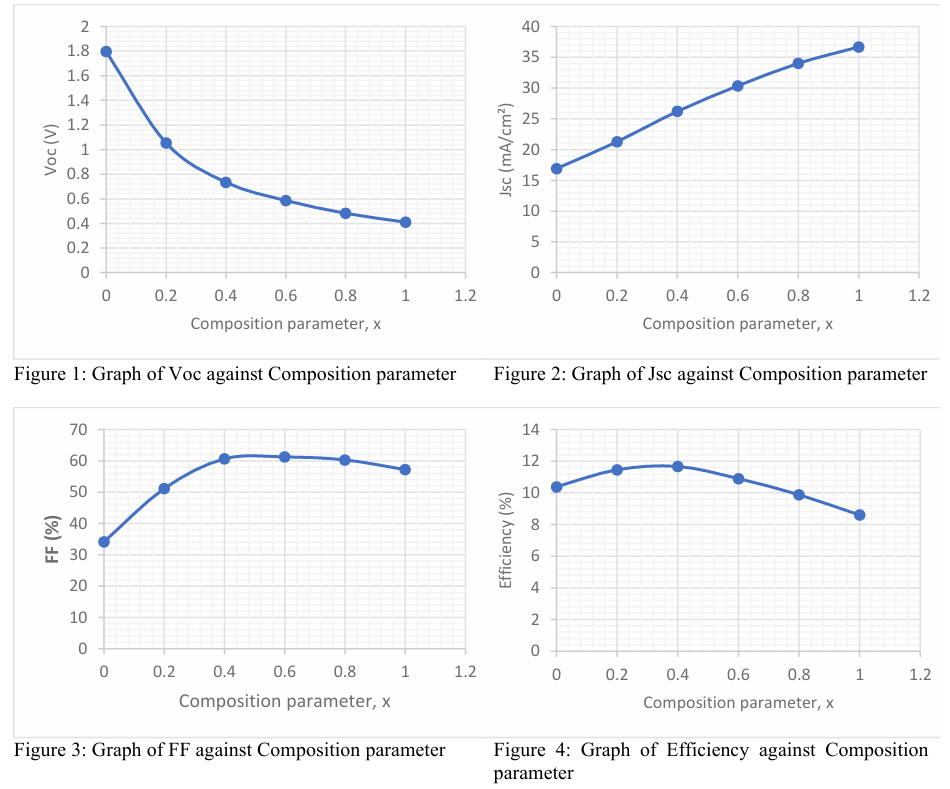Effect of Ga/(In+Ga) ratio on the Efficiency of Cu(InxGa1-x)Se2 (CIGS) Thin-Film Solar Cells
Keywords:
CIGS solar cells, Gallium composition, SCAPS-1D simulation, Photovoltaic performanceAbstract
Copper indium gallium diselenide (Cu(InxGa1-x)Se2, CIGS) continues to attract significant interest as an absorber layer in thin-film solar cells owing to its high absorption coefficient, long carrier diffusion length, and tunable bandgap. A key factor governing its performance is the Ga/(In+Ga) ratio, which directly influences the electronic structure, defect formation, and carrier transport within the absorber. In this study, numerical simulations were carried out using SCAPS-1D to systematically investigate the effect of Ga incorporation across the full compositional range (x = 0–1). Composition-dependent models were employed to account for bandgap variation, electron affinity, acceptor density, defect states, and density of states. The results demonstrate that gallium incorporation significantly modifies device behavior. Increasing Ga content leads to bandgap widening, which enhances the open-circuit voltage (VOC) but reduces the short-circuit current density (JSC) due to diminished absorption in the longer wavelength region. Conversely, indium-rich compositions exhibit stronger photocurrent generation but suffer from lower voltages. The fill factor (FF) exhibits a maximum of ~61% at Ga fraction x = 0.6, while the overall device efficiency follows a bell-shaped dependence, peaking at 11.7% for x = 0.4. These results reveal a trade-off between voltage and current that must be carefully balanced through absorber composition engineering. Overall, this study identifies the optimal Ga/(In+Ga) ratio to lie within the range of 0.3–0.6, where a balance between Jsc, VOC and FF yield the best photovoltaic response. The insights provided here can serve as practical guidelines for tailoring CIGS absorber layers to achieve improved device efficiency.

Published
How to Cite
Issue
Section
How to Cite
Most read articles by the same author(s)
- Hassan Abdulsalam, Tahir Abdullahi, The Study of Lead-Free CH3NH3GeX3 (X=F, Cl, Br, I and At) for Optoelectronic Applications Using First-Principle , Nigerian Journal of Physics: Vol. 33 No. 2 (2024): Nigerian Journal of Physics - Vol. 33 No. 2




